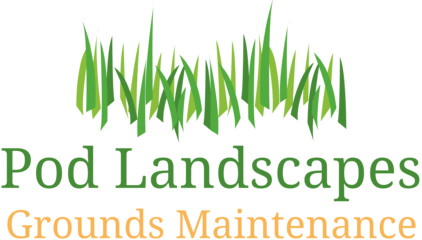Did you know that there are several species of wild animal that are protected in the UK? This means they are either endangered or in declining numbers, and so the Wildlife Law is there to protect their numbers and make sure they aren’t disturbed. And because they are native to the UK, they can be found absolutely anywhere – including on your business premises. This means that you as the business owner have an obligation to check for signs of protected wildlife, and ensure they aren’t disturbed. You will also need to include any protected species in planning permission if you’re planning to extend. As grounds maintenance experts, we can help you work out exactly what to look for, and what to do if you find protected wildlife.
What Animals Are Protected?
There are a lot of different species of plants and animals in the UK that are protected, along with their habitats and supporting features. The exact rules about what you can and can’t do depends on the species, so it’s worth knowing what to look for. The protected species in the UK currently includes:
- Badgers
- Bats
- Wild Cats
- Dolphins
- Dormice
- Hedgehogs
- Pine Martens
- Otters
- Polecats
- Shrews
- Red Squirrels
Obviously there are some of these species you are more likely to encounter than others! For example, it’s highly unlikely you have to worry about dolphins on your premises, and the wild cats referred to are generally only found in Scotland. But there are some you might not think of – like otters. Otters are more common in the UK than you would think with around 10,300 wild otters found across the country last year. They tend to seek out clean rivers filled with food and overgrown banks where they can raise their pups, and are found in almost every county. So if you have a river running through your premises, you may well have otters! And others you will likely have at some point (even if you don’t know it), like dormice, hedgehogs and bats.
How Do You Know If You Have Them?
So the big question is, how do you know if you have a protected species making its home in your grounds? Luckily, most of these species will leave evidence that they are around, or you will be able to spot them if you look closely enough. We’re going to take wild cats and dolphins off this list for now, but some things to look for include:
Badgers: Badgers are one of the animals it’s easiest to spot, as they are bigger and tend to leave a lot of evidence. This will include ‘setts’, which look like large holes dug into banks or areas with lots of cover, often in the shape of a D. You will also notice tufts of fur around your premises, usually on fences or anywhere the badger could have squeezed through a gap. They will also leave footprints in the soil, which look like an oval pad with four toes spread neatly across the top.
Bats: There are 17 species of bats in the UK, and all of them are very small. Bats will hibernate in winter and be most active in summer at night, so this is when you’re likely to see signs. The easiest way to detect bats is their droppings, which are similar to mice droppings but will crumble to dust if put under pressure. You’ll often find them accumulated on windows, walls and in your heating and ventilation. You will also hear the noise – a chattering, high pitches squeaking, and see them flying around at dusk.
Dormice: Dormice like to make their homes in dense woodland or in overgrown hedgerows, which is just another reason to keep your hedges well maintained! They will make nests of leaves and fallen debris, usually inside the branches of the hedge itself. These mice rarely descend to ground level except to hibernate in winter. Keep an eye out for nests when maintaining your trees and hedges, and if you have trees that drop nuts of any kind, watch for small round holes in the side – the tell-tale sign of a dormouse.
Hedgehogs: The most common protected species in the UK, hedgehogs can be found anywhere, especially at this time of year. They like big piles of leaves and dark, damp environments like piles of leaves, compost heaps and logs. They’re nocturnal animals. So during the day look for droppings, disturbed foliage, and the distinctive snuffling and crying sounds they make during mating season.
Pine Martens: Pine Martens are a member of the weasel family, and look a lot like a stoat. They tend to live in coniferous woodlands and scrublands, so if you have these near your premises they may visit you looking for food. They make their dens in hollow trees, fallen wood or sheltering rocks, and they leave distinct coiled droppings, five toed tracks about 5cm big, and make a high-pitched call during the summer.
Otters: If you have a river or stream running through your premises, then keep an eye out for otters. The biggest sign is their footprints, which have five tows and a large, round pad. They will also leave a clear or black, jelly-like substance along the river banks.
Polecats: Another relative of the weasel, polecats were once on the brink of extinction. They look similar to pine martens, but have dark markings around their eyes like a raccoon. They like to live pretty much anywhere, but prefer wetlands, grassland pastures and forests. They like to make their dens in existing structures, so look for disturbances in burrows, log piles and similar. You may also find remains of small mammals nearby, as they are carnivores that prefer rabbits, small rodents and birds.
Shrews: Shrews will make their tunnels in the ground or underneath a log, and will usually cover it with fallen leaves. They will be hard to spot, but they are incredibly clean animals and will always defecate outside of the nest. So if you see a large density of droppings in one place, it’s likely a shrew’s nest.
Red Squirrels: The best way to tell if squirrels are in the area is signs of feeding. Cones or any type are their favourite food, so you will often find them nibbled on the ground. They will find comfortably, raised mossy areas in the sunshine to feed, so if you have tree stumps or rockeries, these are a good place to look. They also enjoy mushrooms, create an untidy ball of sticks, moss and leaves for a nest, and it’s fairly easy to recognise their tracks – they’re tiny, human-like handprints that will criss-cross everywhere.
Can Grounds Maintenance Help?
Absolutely! Regular grounds maintenance means you will have a team not only keeps your grounds looking nice, but it also gives us the chance to keep an eye out for signs of protected wildlife, and for pests. Many of the signs above are quite subtle, and it’s likely you don’t have the time to inspect your grounds regularly for them. By hiring a grounds maintenance company, you can be sure your grounds are being looked after and you aren’t disturbing any protected species in the process.
At Pod Landscapes, we do more than trim hedges and cut grass. We understand how important the local ecosystem is, and do our best to balance keeping the wildlife happy and ensuring your premises are kept looking good all year round. If you would like to find out more, just get in touch with the team today.

